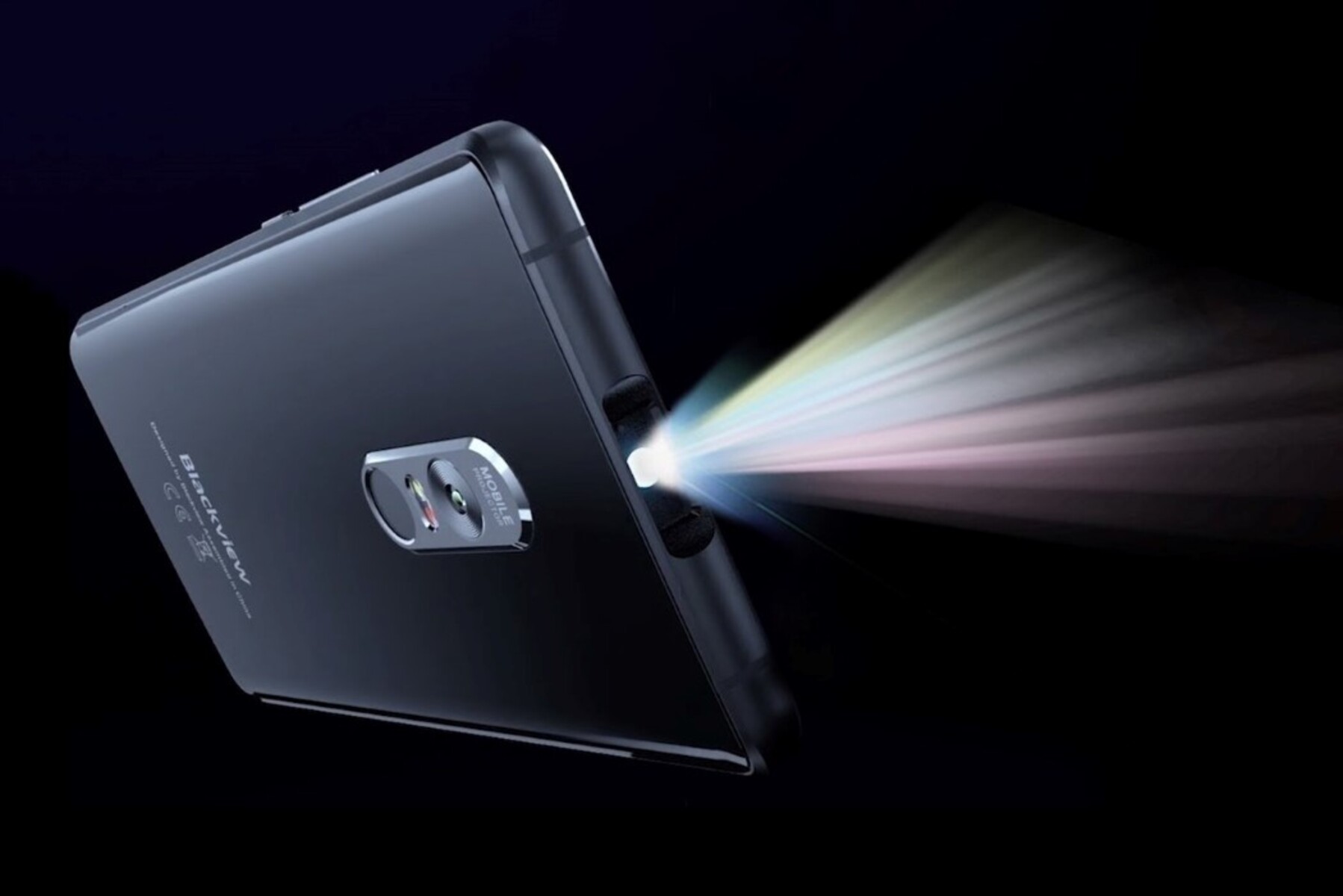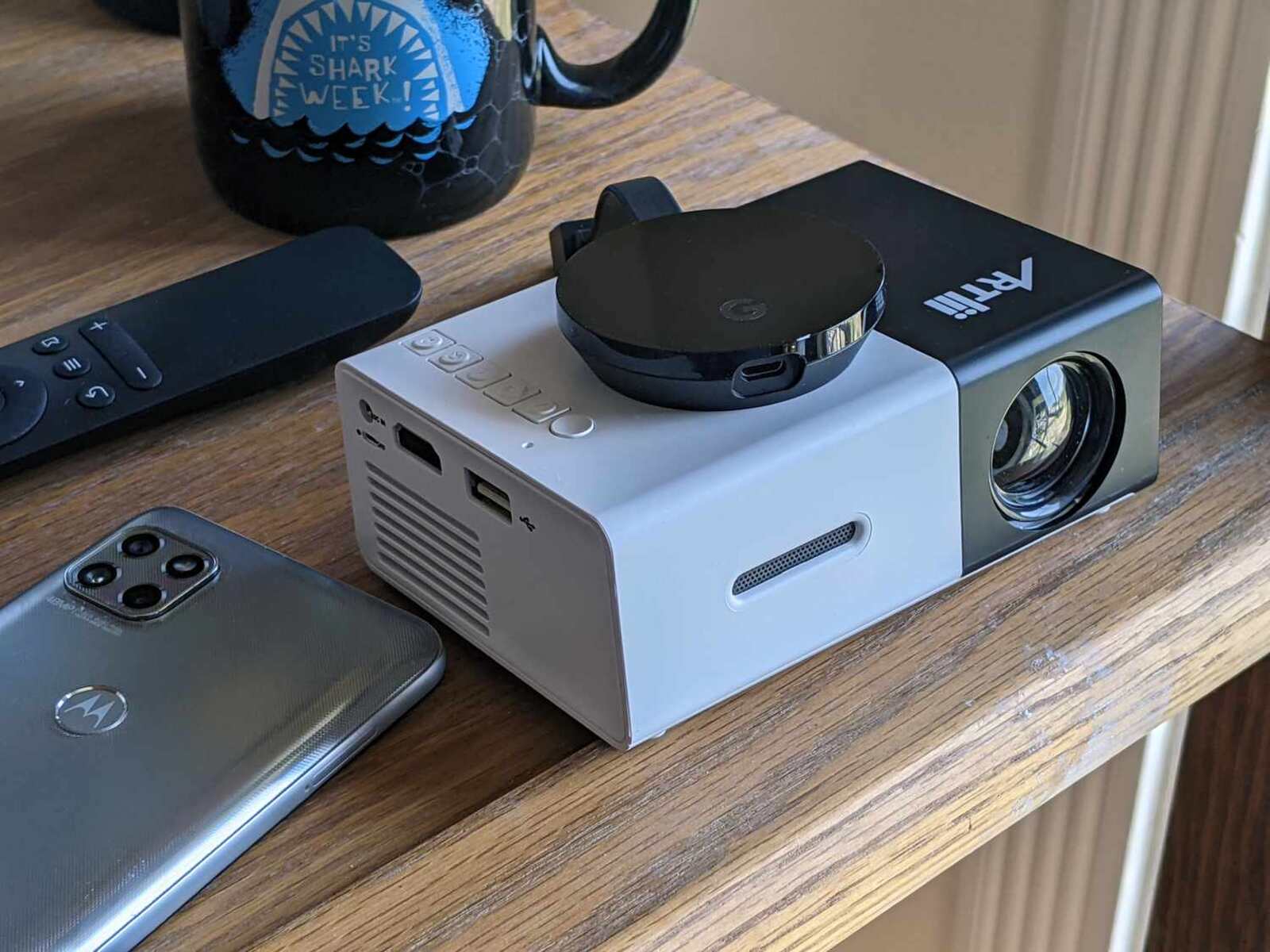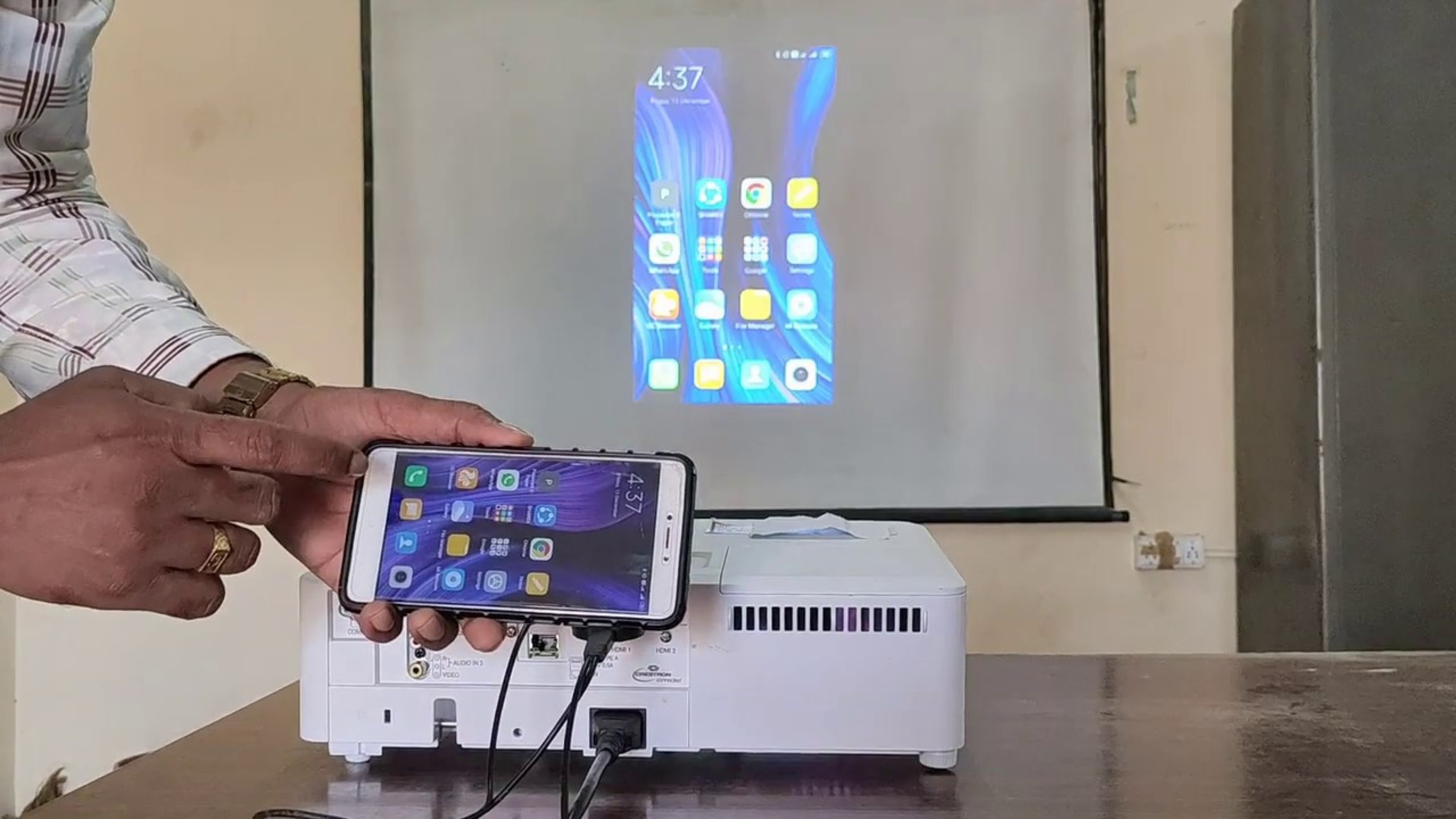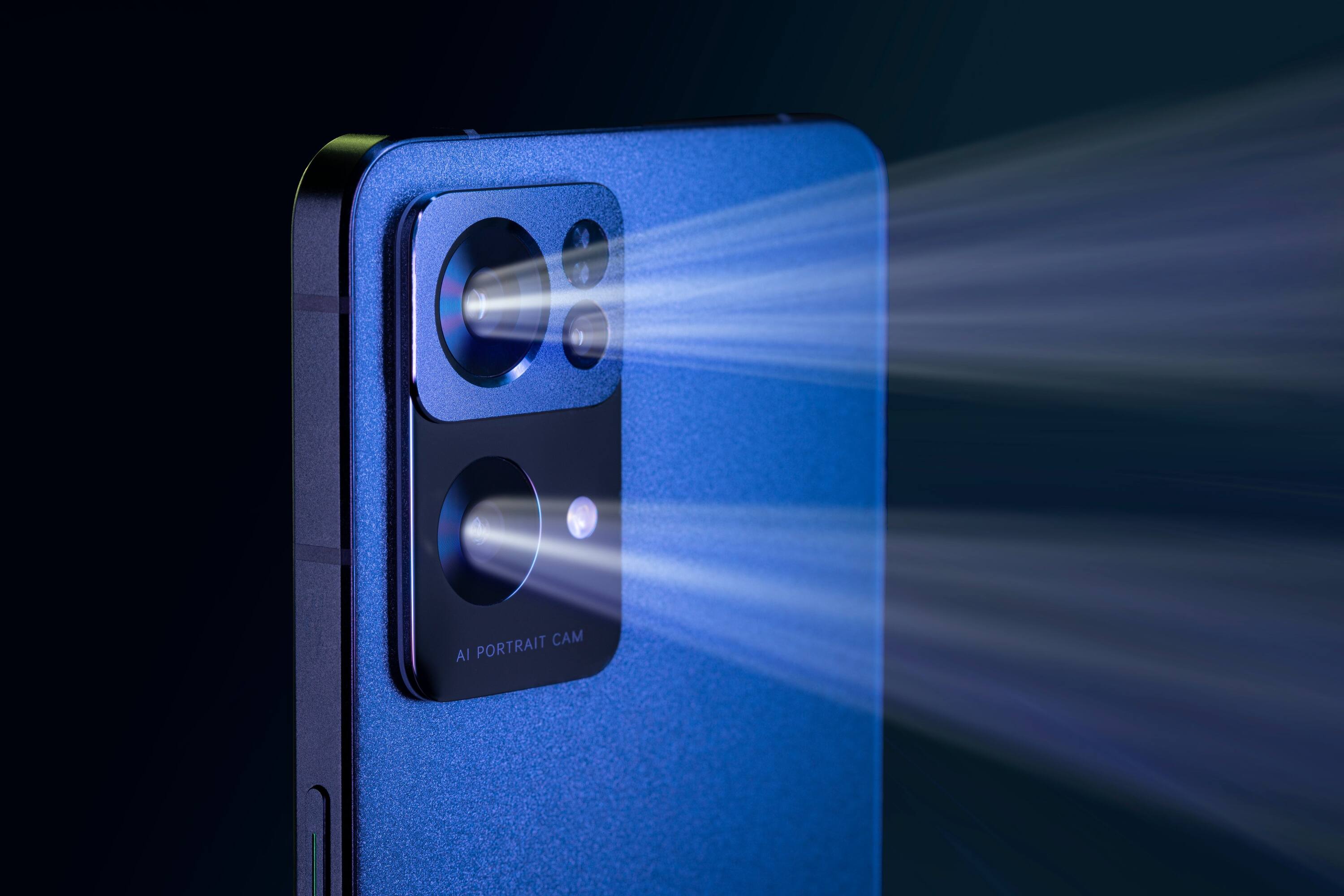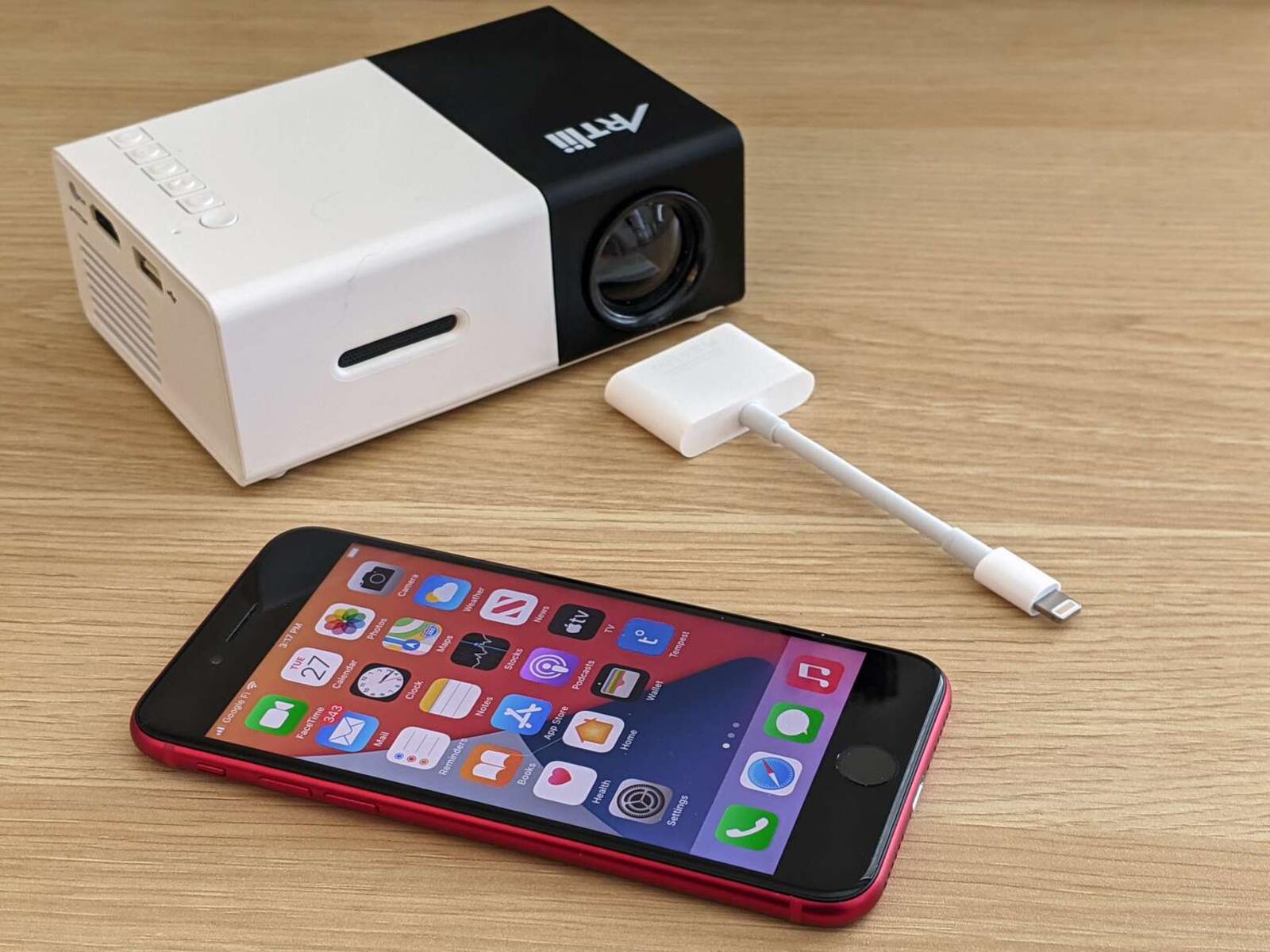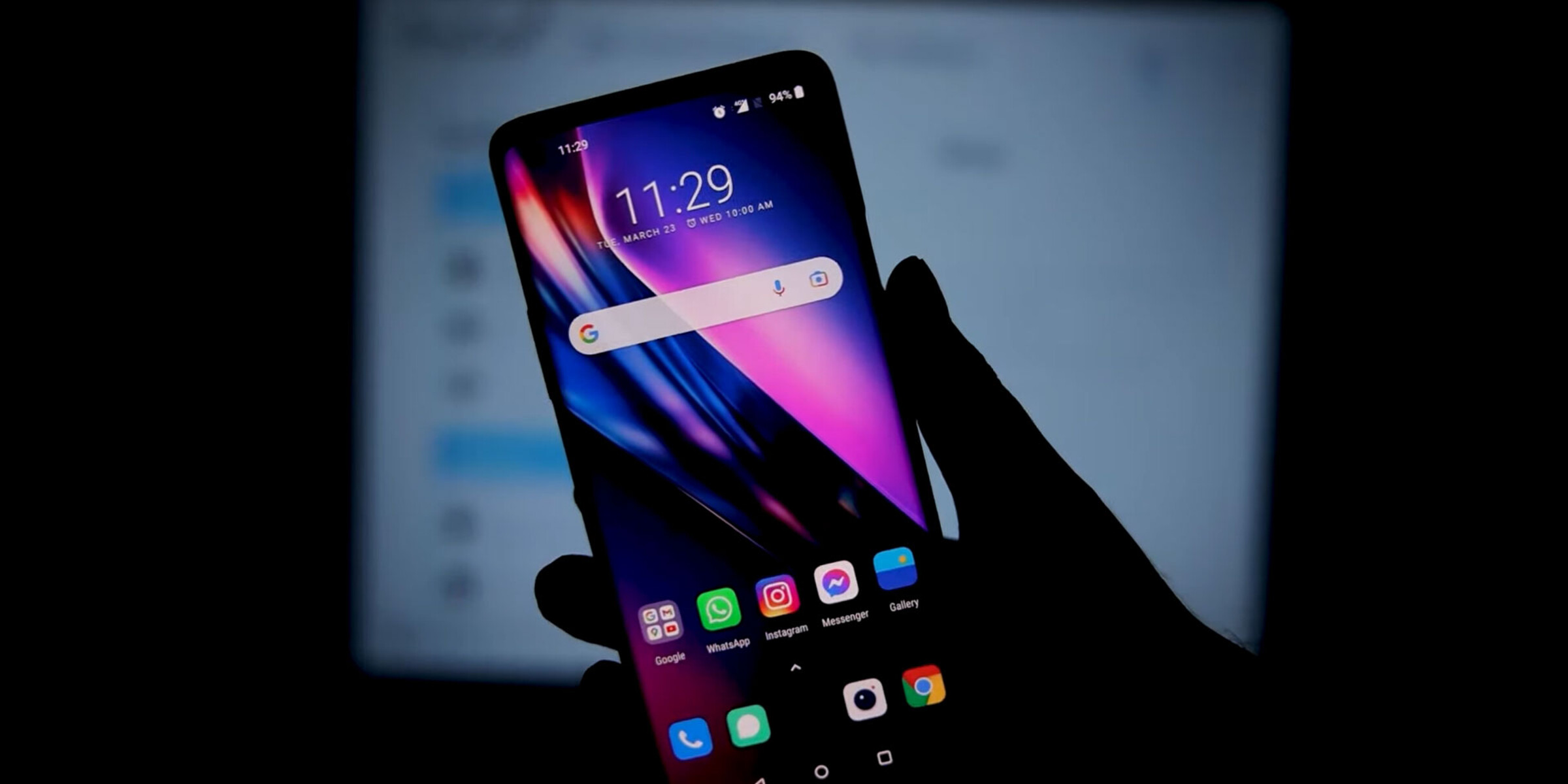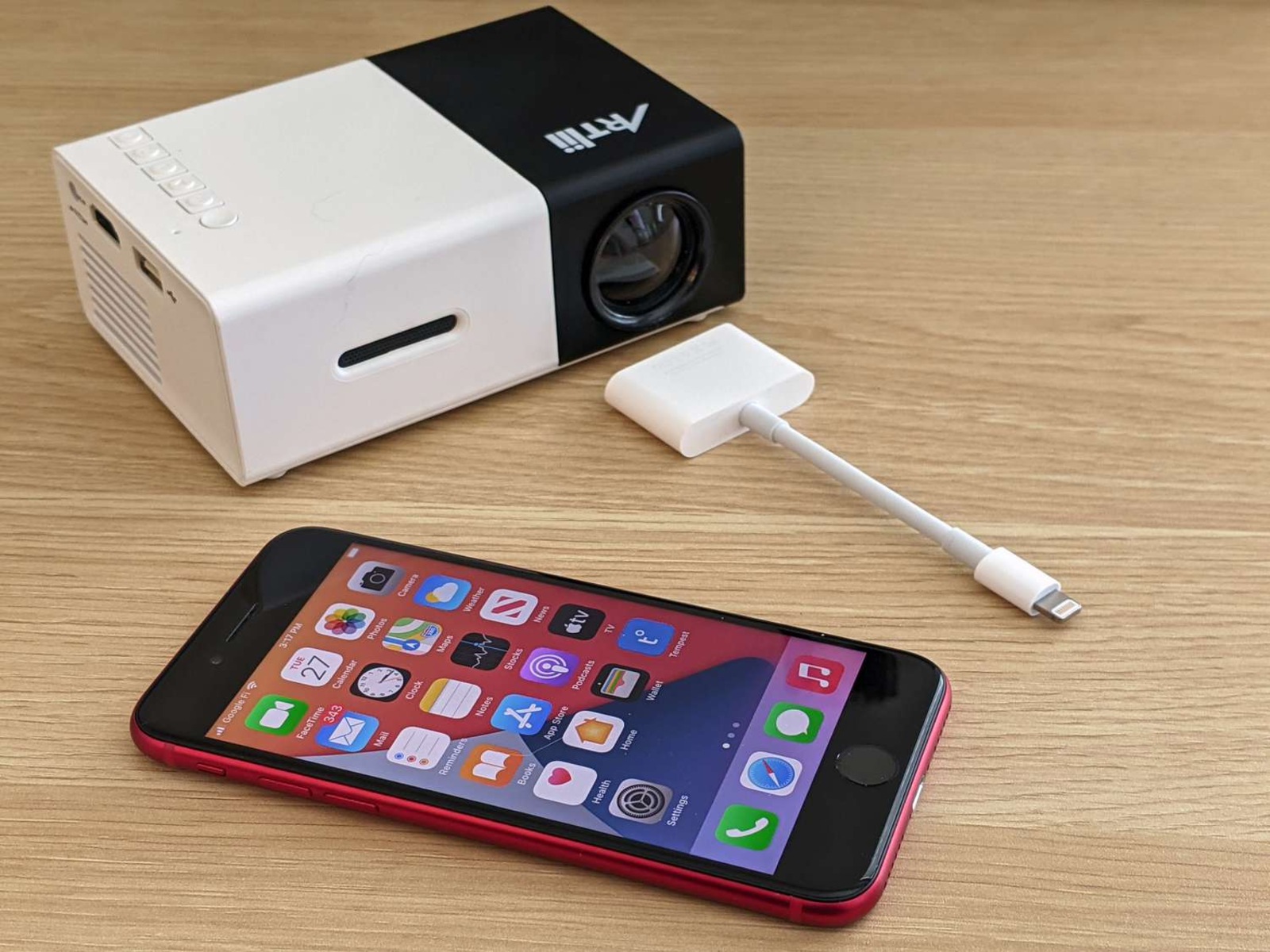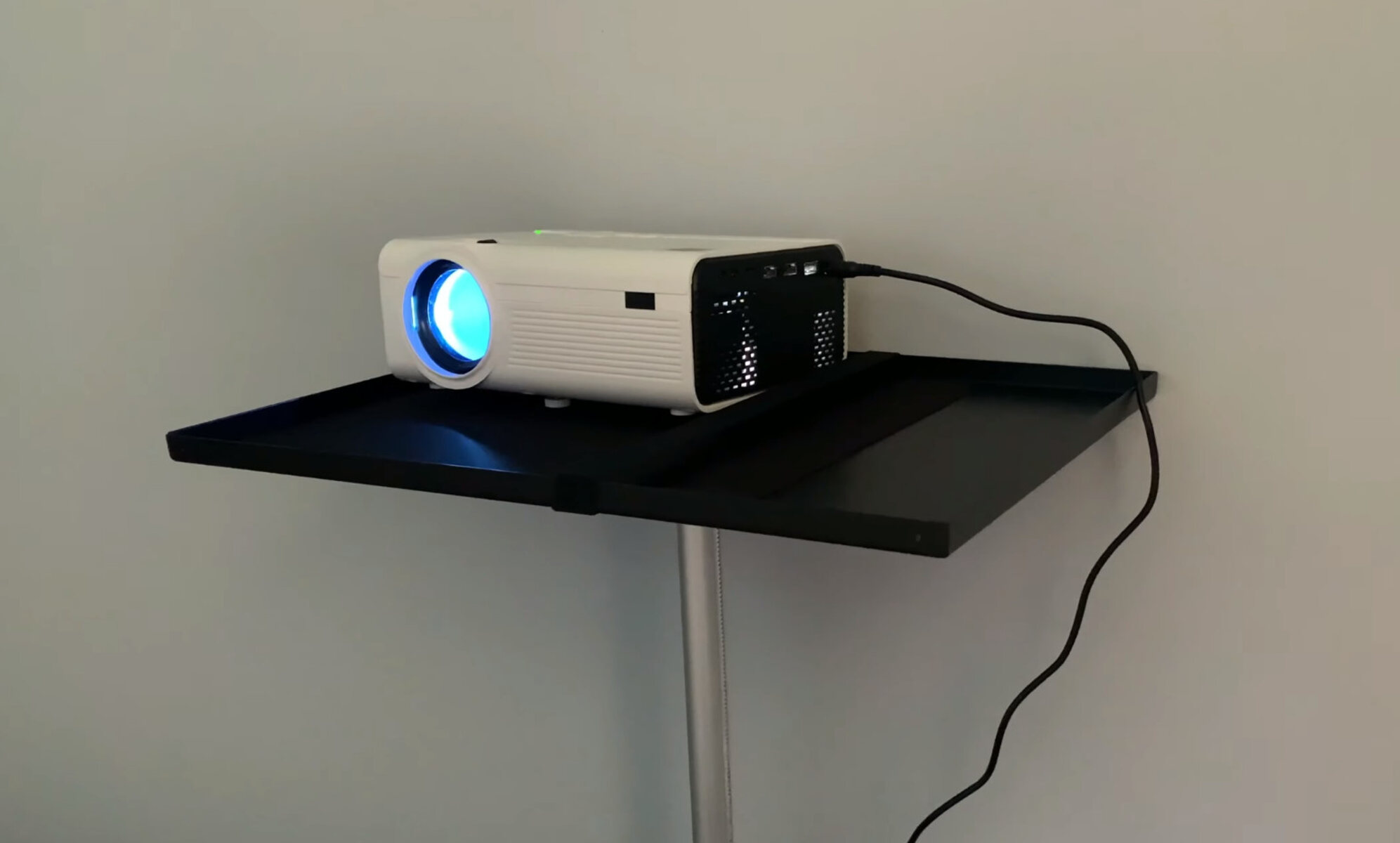Introduction
In today’s fast-paced world, innovation is constantly pushing the boundaries of what our smartphones can do. One remarkable feature that has gained popularity in recent years is the integration of projectors into mobile devices. These projector phones offer a unique and convenient way to share videos, photos, presentations, and more, all directly from your phone.
So, what exactly is a projector phone? It is a smartphone equipped with a built-in projector that projects content onto a flat surface, such as a wall or a screen. This feature allows you to enjoy a larger display and share your media with a larger audience without the need for additional equipment.
The benefits of a projector phone are numerous. First and foremost, it enhances your multimedia experience by providing a larger and more immersive viewing experience. Whether you’re watching movies, sharing photos, or showing off your latest presentation, the projector phone delivers a crisp and vibrant display that surpasses the limitations of a small smartphone screen.
Moreover, a projector phone offers convenience and versatility. Instead of relying on external projectors, cables, and screens, you can simply pull out your phone and project your content wherever and whenever you want. This makes it an ideal tool for business professionals, educators, and entertainment enthusiasts who frequently need to share their ideas and media on the go.
Nowadays, there are several projector phones available on the market, each with its own set of features and capabilities. In the next section, we will delve into a comparison of different projector phone models, highlighting their strengths and weaknesses to help you make an informed decision.
What is a projector phone?
A projector phone is a smartphone that comes with an integrated projector, allowing you to project images, videos, presentations, and other media onto a larger surface. It offers the convenience of having a built-in projector, eliminating the need for additional equipment.
This innovative feature utilizes a small projection unit within the phone, capable of producing a bright and clear display on any flat surface. The projector typically uses Digital Light Processing (DLP) or Liquid Crystal Display (LCD) technology to create the projection. It works by emitting light through small panels or mirrors, which then reflect and project the image onto the desired surface.
With a projector phone, you can transform any wall, screen, or even a ceiling into a portable theater or presentation platform. Whether you want to watch a movie with friends, share vacation photos with family, or present a business proposal to clients, the versatility of a projector phone allows you to do it all with ease.
These devices often come with adjustable brightness and focus settings, ensuring optimal image quality and clarity. Some projector phones also offer advanced features like auto keystone correction, which automatically adjusts the projected image to fix any distortion caused by the angle or positioning of the phone.
Projector phones are not limited to just entertainment and presentations. They can also be used for educational purposes, enabling teachers and students to project educational content in the classroom or during group study sessions. In professional settings, projector phones are valuable tools for delivering engaging and impactful presentations, making it easier to captivate an audience and convey information effectively.
One important thing to note is that while projector phones offer the convenience of a built-in projector, they may have slightly larger dimensions and weight compared to regular smartphones. However, manufacturers are continuously working to make these devices sleeker and more lightweight, ensuring a comfortable user experience.
In the next section, we will discuss the benefits of owning a projector phone and explore the various models available on the market.
Benefits of a projector phone
Projector phones offer a range of benefits that elevate your multimedia experience and enhance your everyday smartphone usage. Here are some key advantages of owning a projector phone:
- Larger Display: One of the main benefits of a projector phone is the ability to enjoy a larger display. Instead of squinting at a tiny phone screen, you can project your content onto a much larger surface, providing a more immersive and enjoyable viewing experience. Whether you’re watching movies, gaming, or browsing photos, the larger display offers a captivating visual experience.
- Convenience: With a projector phone, you have a portable entertainment and presentation solution in your pocket. No need to carry around additional equipment like projectors, screens, or cables. Simply pull out your phone, project your content onto any suitable surface, and enjoy hands-free viewing and sharing. It’s a hassle-free way to instantly create a larger display wherever you are.
- Sharing with Others: Projector phones are perfect for social gatherings or professional settings where you need to share content with a larger audience. Whether it’s sharing photos from your latest vacation, watching videos with friends, or delivering a presentation to a room full of people, a projector phone ensures everyone can see and engage with your content without huddling around a small screen.
- Business and Education: For professionals and educators, a projector phone can be a powerful tool. It allows you to deliver impactful presentations during meetings, conferences, or training sessions. Teachers can use projector phones to project educational content in the classroom, making it easier for students to follow along and engage with the material. It adds a new dimension to visual communication and enhances the overall learning experience.
- Flexibility: A projector phone offers flexibility in terms of where and how you consume your media. Whether you’re at home, in the office, or on the go, you can easily project content onto a wall, ceiling, or any other flat surface. It’s perfect for creating impromptu movie nights, sharing content during outdoor gatherings, or even just enjoying a video in bed without having to hold your phone above your face.
As projector phone technology continues to improve, we can expect even more benefits and features to be introduced. From improved image quality to longer battery life, these devices are constantly evolving to meet the demands of consumers.
In the next section, we will compare some of the top projector phones available on the market, helping you make an informed decision when choosing the right model for your needs.
Comparison of projector phones on the market
With the growing popularity of projector phones, several models have entered the market, each offering unique features and specifications. Here, we compare some of the top projector phones available to help you make an informed decision:
- Samsung Galaxy Beam: Known for its innovative design, the Samsung Galaxy Beam features a built-in projector that can display content up to 50 inches in size. With a sleek and compact design, it offers portability without sacrificing performance. The device boasts vibrant colors and sharp image quality, making it ideal for multimedia enthusiasts.
- Moto Insta-Share Projector: Designed to work with compatible Motorola smartphones, the Moto Insta-Share Projector snaps onto the back of the phone, instantly turning it into a projector. This accessory offers an impressive 70-inch projection and comes with built-in speakers, making it a versatile option for both entertainment and professional use.
- Xiaomi Mi Laser Projector: While not a traditional projector phone, the Xiaomi Mi Laser Projector is worth mentioning for its outstanding projection capabilities. This device can project an image size of up to 150 inches and delivers exceptional image quality with its laser projection technology. With multiple connectivity options, it can be easily used with smartphones and other devices.
- ASUS ZenBeam Go E1Z: The ASUS ZenBeam Go E1Z is a portable projector that can be connected to smartphones via HDMI. While it’s not integrated into the phone itself, it offers versatility and allows you to project content from multiple devices. Its small size and lightweight design make it a convenient choice for those who frequently need to project on the go.
When comparing projector phones, it’s important to consider factors such as image quality, projection size, battery life, and additional features. Additionally, the compatibility with your smartphone, ease of use, and overall build quality should also be taken into account.
There are other projector phone options available, each with its own set of features and specifications. Researching the latest models and reading reviews from trusted sources can help you find the perfect projector phone that meets your specific needs and preferences.
In the next section, we will explore some popular phone models that come with built-in projectors and discuss their features in more detail.
Phone models with built-in projectors
Several phone models offer the convenience of a built-in projector, providing a seamless way to project content without the need for additional accessories. Here are some popular phone models that come equipped with built-in projectors:
- Samsung Galaxy Beam: The Samsung Galaxy Beam was one of the pioneers in the projector phone market. It features a built-in projector capable of displaying content up to 50 inches in size. With its compact design and impressive image quality, the Galaxy Beam remains a popular choice for those seeking a projector phone.
- Moto Z with Moto Insta-Share Projector: The Moto Insta-Share Projector is an attachment specifically designed for the Moto Z series of smartphones. It easily snaps onto the back of the phone, instantly transforming it into a projector. This accessory offers a 70-inch projection size and built-in speakers, making it a versatile option for both entertainment and professional use.
- Lenovo Smart Cast: The Lenovo Smart Cast takes projector phones to the next level with its unique design. In addition to projecting content onto a flat surface, it also features a touch-sensitive panel that allows you to interact with the projection. This innovation opens up new possibilities for gaming and interactive presentations.
- Xiaomi Mi MIX Alpha: The Xiaomi Mi MIX Alpha is an exceptional concept phone that showcases cutting-edge technology. While it is not currently available for mass production, it is worth mentioning due to its extraordinary features. The phone’s surround display is capable of projecting content on all sides, offering a truly immersive experience.
These are just a few examples of phone models that come with built-in projectors. It’s important to note that as technology continues to advance, new models may enter the market with even more innovative features and improved projection capabilities.
When considering a phone with a built-in projector, it’s important to evaluate factors such as image quality, projection size, battery life, and overall performance. Additionally, consider the compatibility with your preferred operating system and the availability of any necessary accessories.
In the next section, we will provide some useful tips on how to make the most out of the projector feature on your phone.
How to use the projector feature on your phone
Using the projector feature on your phone is a straightforward process that allows you to easily project your content onto a larger surface. Here are some steps to help you make the most out of this incredible feature:
- Find a suitable surface: Look for a flat surface such as a wall, screen, or even a ceiling where you can project your content. Ensure that the surface is clean and free of any obstructions that may affect image quality.
- Adjust the projector settings: Access the projector settings on your phone. This can usually be found in the display or settings menu. Adjust the brightness, focus, and other settings to ensure optimal image quality and clarity.
- Connect to the projector: If your phone requires a separate connection to the projector, such as an HDMI cable or wireless connection, ensure that the connection is secure and stable. Follow the instructions provided by the manufacturer for the specific connection method.
- Select the content: Choose the file or app that you want to project. It can be a photo gallery, a video player, a presentation, or any other compatible media. Make sure the content is ready to be projected before proceeding.
- Position the phone: Carefully position your phone to align the projected image with your desired surface. Use a tripod or a stable surface to ensure that your phone stays in place during the projection. Some phones may have a built-in stand or support to aid in positioning.
- Start the projection: Once everything is set up, start the projection from the projector app or settings menu on your phone. The content should now be projected onto the selected surface.
- Adjust and enjoy: Fine-tune the projector settings as needed to optimize the image quality and size. Sit back, relax, and enjoy your multimedia content on the larger projected display.
Remember to familiarize yourself with the specific functions and features of your projector phone. Different phone models may have slightly different steps for accessing and using the projector feature.
Additionally, make sure to follow the manufacturer’s recommendations for usage time and maintenance of the projector component to ensure its longevity and optimal performance.
In the next section, we will provide some useful tips for choosing the best projector phone that suits your needs.
Tips for choosing the best projector phone
When selecting a projector phone, there are several factors to consider to ensure you choose the best device that meets your specific needs. Here are some important tips to help you make an informed decision:
- Image quality: Look for a projector phone that offers excellent image quality. Consider the resolution, brightness, and contrast ratio of the projector. Higher resolution and brightness levels will result in more vibrant and detailed projections.
- Projection size and distance: Check the projection size and distance capabilities of the phone. Some devices can project larger images while being placed at a shorter distance from the surface. Consider your projection needs and choose a phone that can cater to them.
- Battery life: Pay attention to the battery life of the projector phone. Using the projector feature can drain the battery faster, so choose a device with a long-lasting battery to ensure uninterrupted projection.
- Connectivity options: Consider the connectivity options available on the phone. Look for devices that offer a range of connectivity options such as HDMI, USB, and wireless connections. This will allow you to easily connect to various devices and project different types of content.
- Compatibility: Ensure that the projector phone you choose is compatible with your preferred operating system and the apps and files you frequently use. Verify if the phone supports popular multimedia formats to ensure seamless projection.
- Additional features and functionality: Explore the additional features and functionality offered by the phone. Some projector phones may have built-in speakers, advanced projection settings, or even touch-sensitive panels for interactive projections. Consider your specific requirements and choose a phone that offers the features you desire.
- Reviews and ratings: Read reviews and ratings from trusted sources to gather insights from users who have already experienced the projector phone. This will help you understand the pros and cons of each device and make an informed decision based on real-world feedback.
- Price and budget: Set a budget for your projector phone and consider the price range of available options. Compare the features and specifications of different models to find the best balance between price and performance.
By considering these tips, you can narrow down your options and choose a projector phone that perfectly suits your needs, preferences, and budget.
In the next section, we will address some frequently asked questions about projector phones to provide further clarity on this innovative technology.
Frequently Asked Questions about Projector Phones
Projector phones are a unique and exciting technology that may raise some questions. Here, we address some of the frequently asked questions about projector phones to provide further clarity:
- Can I use a projector phone during the day? While projector phones are designed to be used in various lighting conditions, the ambient light can affect the visibility of the projected image. For the best results, it is recommended to use the projector phone in a dimly lit or darkened environment.
- How far can I project with a projector phone? The projection distance of a projector phone varies between models. Typically, you can project content up to a few meters away. However, it is advisable to consult the manufacturer’s specifications for the specific phone model you are interested in.
- What is the lifespan of the projector component in a phone? The lifespan of the projector component in a phone can vary depending on various factors, including usage time, maintenance, and overall build quality. With proper care and regular use within recommended guidelines, the projector component should last for several years.
- Can I project copyrighted content using a projector phone? It is essential to respect copyright laws and usage rights when using a projector phone. Ensure that you have the necessary rights or permissions to showcase copyrighted content in public or commercial settings.
- Can I watch 3D content with a projector phone? Some projector phones support the projection of 3D content. However, keep in mind that you may need additional accessories, such as 3D glasses, to fully enjoy the 3D experience. Check the specifications and compatibility of the projector phone to determine its 3D capabilities.
- Do all projector phones have built-in speakers? Not all projector phones have built-in speakers. Some models rely on the phone’s internal speakers, while others come with integrated speakers specifically designed for better audio output during projection. Check the specifications of the projector phone to confirm if it has built-in speakers.
If you have further questions about projector phones, it is recommended to consult the manufacturer’s documentation, user manuals, or reach out to their customer support for more detailed information.
In the final section, we will conclude this article by summarizing the key points discussed and expressing the overall value and potential of projector phones in the digital era.
Conclusion
Projector phones have revolutionized the way we share and experience media on our smartphones. With their built-in projectors, these devices allow us to project content onto larger surfaces, providing a more immersive and enjoyable viewing experience. Whether it’s for entertainment, education, or professional use, projector phones offer a range of benefits that enhance our multimedia experience and bring convenience to our daily lives.
We explored what projector phones are and how they work. We discussed the advantages of owning a projector phone, including a larger display, convenience, and the ability to share content with a larger audience. We also compared different projector phone models on the market, highlighting their unique features and specifications.
Additionally, we provided tips for choosing the best projector phone based on factors such as image quality, projection size and distance, battery life, connectivity options, compatibility, and additional features. By considering these factors, you can make an informed decision and find the projector phone that best suits your needs and preferences.
We also addressed some frequently asked questions to provide further clarity on projector phones, including their usage during the day, projection distance, lifespan of the projector component, copyright considerations, and 3D capabilities.
As technology advances, we can expect projector phones to continue to evolve, offering even more impressive features and capabilities. Whether you’re a multimedia enthusiast, a business professional, or an educator, a projector phone can enhance your digital experience and allow you to share your content in new and exciting ways.
So, if you’re looking to elevate your smartphone experience and enjoy the benefits of a larger display, consider investing in a projector phone that aligns with your needs and preferences. Immerse yourself in a whole new level of multimedia sharing and make your content truly come to life.







